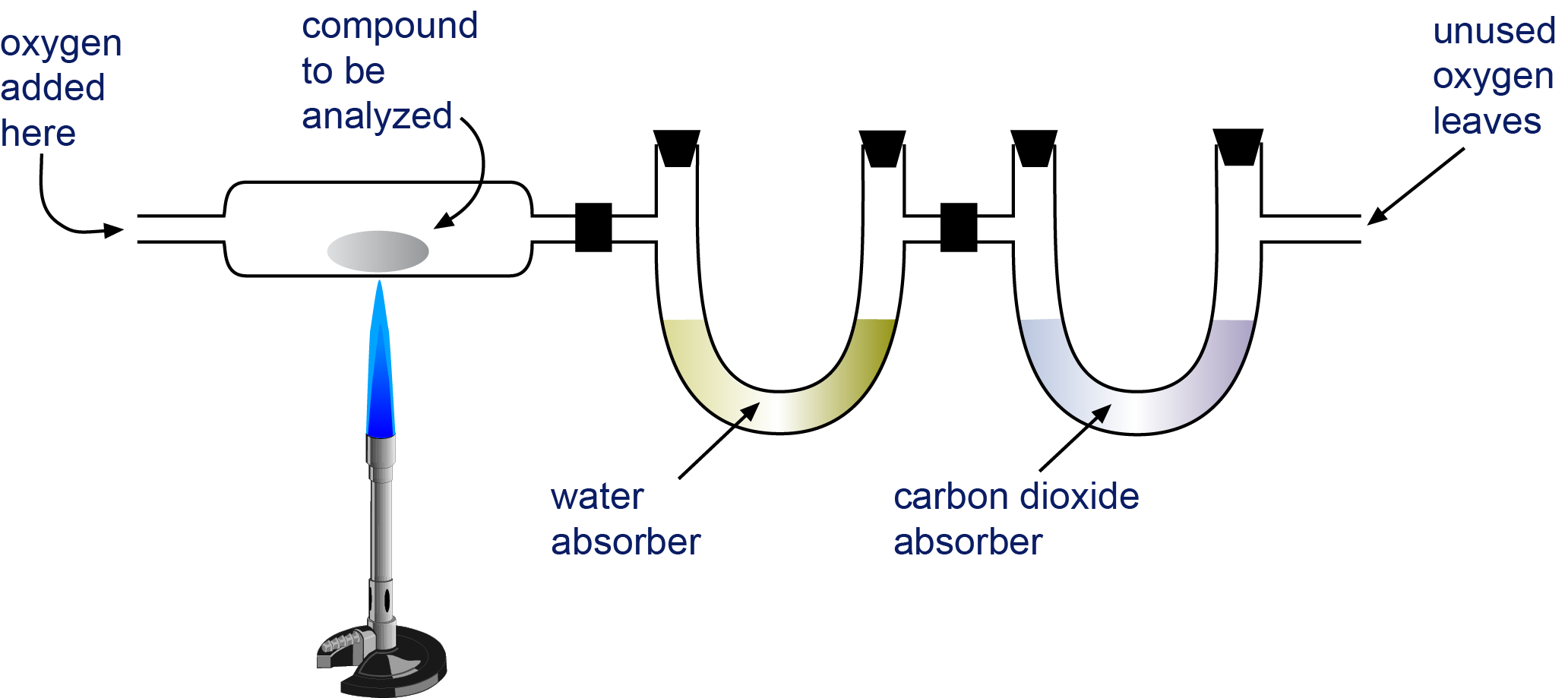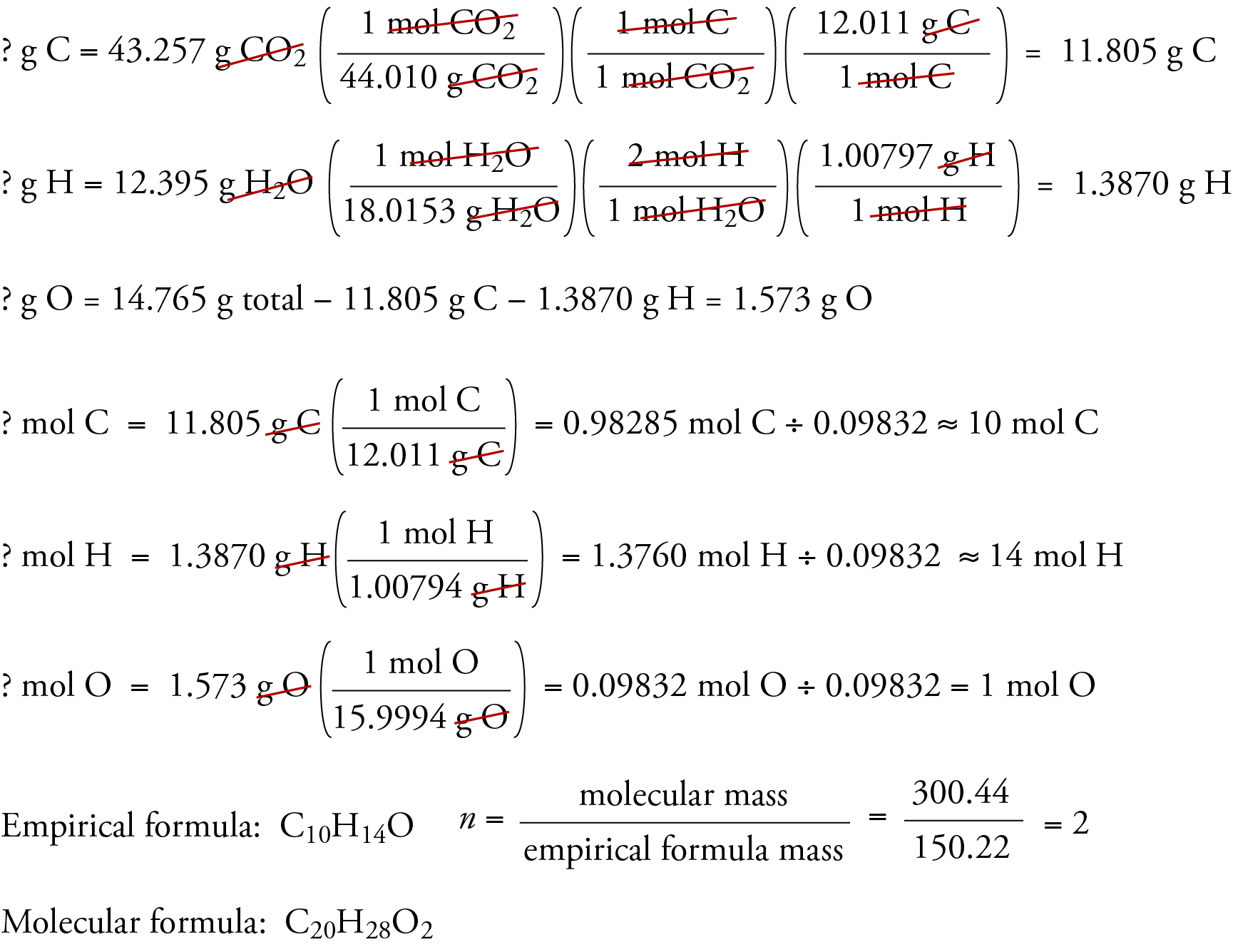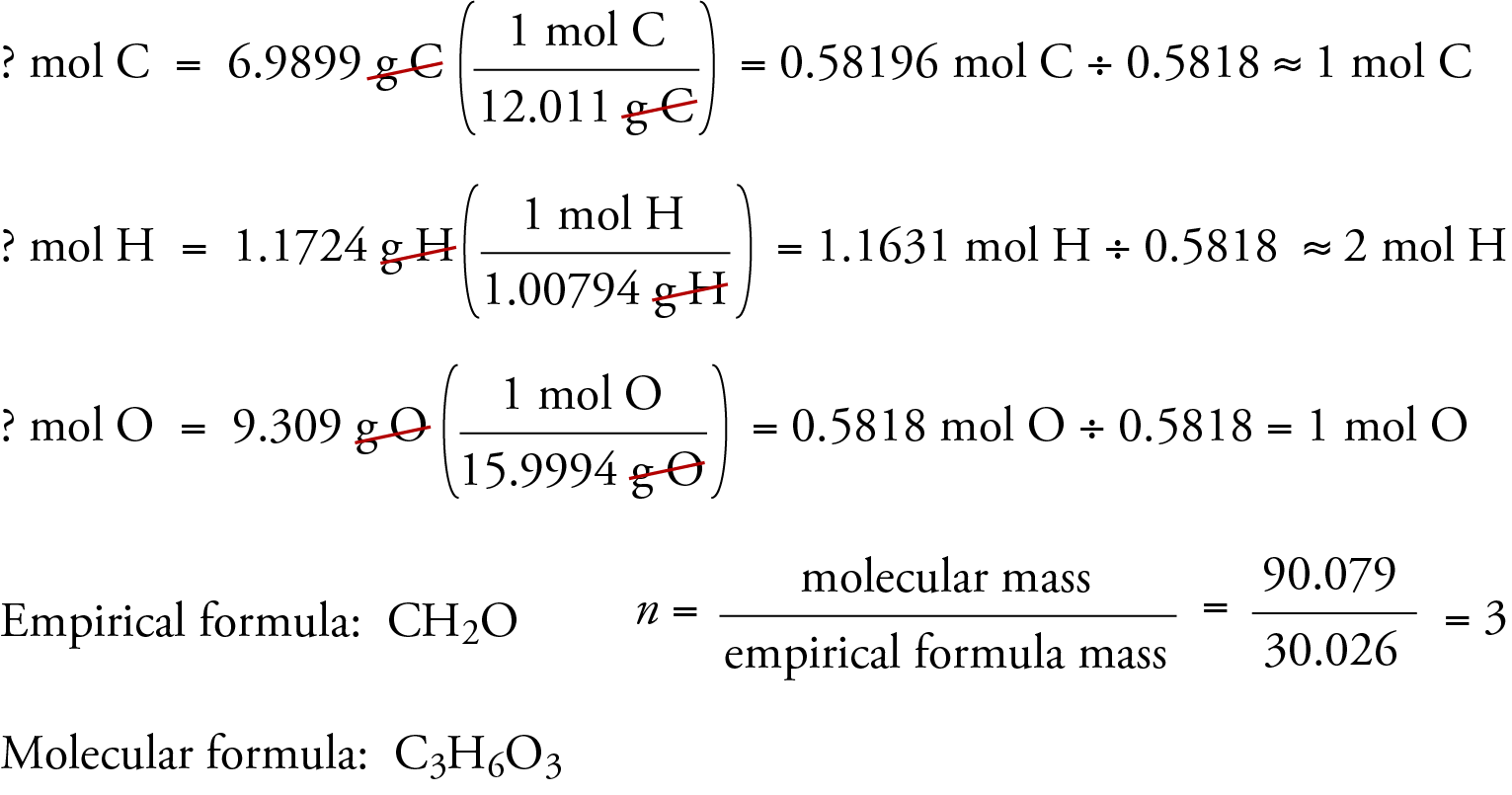How To Do Combustion Analysis
Obtaining Empirical and Molecular Formulas from Combustion Data
Empirical and molecular formulas for compounds that incorporate only carbon and hydrogen (CaHb) or carbon, hydrogen, and oxygen (CaHbOc) can be determined with a process chosen combustion analysis. The steps for this process are
Weigh a sample of the chemical compound to be analyzed and place it in the appliance shown in the image beneath.
Burn the compound completely. The just products of the combustion of a chemical compound that contains only carbon and hydrogen (CaHb) or carbon, hydrogen, and oxygen (CaHbOc) are carbon dioxide and h2o.
The H2O and CO2 are fatigued through two tubes. One tube contains a substance that absorbs water, and the other contains a substance that absorbs carbon dioxide. Counterbalance each of these tubes earlier and later the combustion. The increase in mass in the first tube is the mass of H2O that formed in the combustion, and the increase in mass for the second tube is the mass of COtwo formed.
Presume that all the carbon in the compound has been converted to CO2 and trapped in the second tube. Summate the mass of carbon in the compound from the mass of carbon in the measured mass of CO2 formed.
Assume that all of the hydrogen in the compound has been converted to H2O and trapped in the commencement tube. Calculate the mass of hydrogen in the chemical compound from the mass of hydrogen in the measured mass of water.
If the compound contains oxygen likewise as carbon and hydrogen, calculate the mass of the oxygen past subtracting the mass of carbon and hydrogen from the full mass of the original sample of compound.
Use this data to decide the empirical and molecular formulas in the usual way.

Apparatus for Combustion Analysis A compound containing carbon and hydrogen (CaHb) or carbon, hydrogen, and oxygen (CaHbOc) is burned completely to form HtwoO and COii. The products are fatigued through ii tubes. The first tube absorbs water, and the second tube absorbs carbon dioxide.
To illustrate how empirical and molecular formulas tin can be adamant from data derived from combustion analysis, let's consider a substance called trioxane. Formaldehyde, CH2O, is unstable as a pure gas, readily forming a mixture of a substance called trioxane and a polymer called paraformaldehyde. That is why formaldehyde is dissolved in a solvent, such equally water, before it is sold and used. The molecular formula of trioxane, which contains carbon, hydrogen, and oxygen, can be adamant using the data from 2 different experiments. In the first experiment, 17.471 g of trioxane is burned in the apparatus shown in a higher place, and ten.477 one thousand HiiO and 25.612 g CO2 are formed. In the 2nd experiment, the molecular mass of trioxane is institute to be ninety.079.
We tin can get the molecular formula of a compound from its empirical formula and its molecular mass. (Run into the text for a reminder of how this is washed.) To go the empirical formula, we need to determine the mass in grams of the carbon, hydrogen, and oxygen in 17.471 g of trioxane. Thus we need to perform these general steps.
Outset, convert from the data given to grams of carbon, hydrogen, and oxygen.
Second, determine the empirical formula from the grams of carbon, hydrogen, and oxygen.
Third, determine the molecular formula from the empirical formula and the given molecular mass.
Because we assume that all the carbon in trioxane has reacted to form in CO2, we tin can find the mass of carbon in 17.471 g trioxane by calculating the mass of carbon in 25.612 m COii.

Because we assume that all of the hydrogen in trioxane has reacted to form H2O, nosotros can detect the mass of hydrogen in 17.471 k trioxane past calculating the mass of hydrogen in 10.477 k H2O.

Considering trioxane contains merely carbon, hydrogen, and oxygen, we can calculate the mass of oxygen past subtracting the masses of carbon and hydrogen from the full mass of trioxane.
? 1000 O = 17.471 g trioxane - 6.9899 g C - 1.1724 g H = nine.309 g O
We now calculate the empirical formula , the empirical formula mass, and the molecular formula .
Sample Report Canvas: Computing Molecular Formulas from Combustion Information
Tip-off – You desire to summate the molecular formula of a compound containing only carbon and hydrogen (CaHb) or carbon, hydrogen, and oxygen (CaHbOc), and you are given its molecular mass and the masses of CO2 and H2O formed in the combustion of a given mass of the chemical compound.
General Procedure
Summate the number of grams of carbon in the chemical compound by computing the number of grams of carbon in the given amount of COtwo.

Summate the number of grams of hydrogen in the compound past calculating the number of grams of hydrogen in the given amount of HiiO.

If the compound contains oxygen, calculate the number of grams of oxygen in it by subtracting the masses of carbon and hydrogen from the given full mass of compound.
? g O = (given) g total - (calculated) k C - (calculated) m H
Calculate the empirical formula of the compound from the grams of carbon, hydrogen, and oxygen.
Summate the formula mass for the empirical formula and split the given molecular mass by the empirical formula mass to get northward.
Multiply each of the subscripts in the empirical formula by n to go the molecular formula.
EXAMPLE – Obtaining a Molecular Formula from Combustion Data:
Dianabol is one of the anabolic steroids that has been used by some athletes to increment the size and forcefulness of their muscles. It is similar to the male hormone testosterone. Some studies indicate that the desired furnishings of the drug are minimal, and the side effects, which include sterility and increased hazard of liver cancer and middle disease, keep most people from using information technology. The molecular formula of Dianabol, which consists of carbon, hydrogen, and oxygen, tin be determined using the data from two dissimilar experiments. In the first experiment, 14.765 g of Dianabol is burned, and 43.257 g CO2 and 12.395 g H2O are formed. In the second experiment, the molecular mass of Dianabol is found to be 300.44. What is the molecular formula for Dianabol?
Solution:

How To Do Combustion Analysis,
Source: https://preparatorychemistry.com/Bishop_Combustion_Analysis.htm
Posted by: fosterfenly1938.blogspot.com




0 Response to "How To Do Combustion Analysis"
Post a Comment